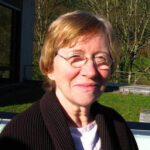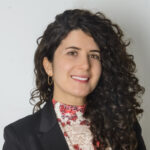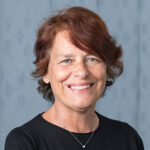International Women in Mathematics Day 2021 – Virtual Conference
Date: Monday 7 June 2021
Time: 11:00 am – 3:00 pm
On the occasion of the International Women in Mathematics Day 2021, we invite you to attend the virtual conference hosting UAE based renowned female mathematicians and organised by Dr Lama Tarsissi, Assistant Professor- Mathematics at Sorbonne University Abu Dhabi and CWM Ambassador in Lebanon and in the UAE.
This day recognizes and celebrates the achievements of all women in mathematics and aims to inspire women and motivate them to become mathematicians for a better working environment.
Audience with a university level background in mathematics as a minimum, would be able to benefit the most from this event.
To register to the session of your choice, please check the below schedule and register through the form at the bottom of the page. You will receive the relevant link by email upon submitting the form.
On the day of the event, please click on the link at the time of the session that you have chosen to attend. This is a single link for the whole conference, so if you wish to attend the full day, you can click on the link at the start time of the first session and all sessions will display. If you wish to attend only one or a few sessions, please click on the link at the designated time of the session you are interested in.
SCHEDULE
Presentation of the history and activities of the Committee for Women in Mathematics of the International Mathematical Union with a focus on the Standing Committee for Gender Equality in Science and the Gender Gap in Science Project.
A dielectric matrix is developed, and an analysis is presented on the plasmon dispersion in strongly coupled charged particle 2D and bilayers in the quantum domain.
Combinatorics on words is related to several branches of mathematics and considered as an interesting topic of studies. In combinatorics on words, we can find many families of words over a finite alphabet. We have the family of Sturmian words that generates infinite words. The family of Christoffel words that is restricted to the family formed by finite Sturmian words. We will be interested also in a third family called family of Lyndon words. As an application, we will use some tools of Combinatorics on words to define the digital convexity which is one of the useful geometric properties of digital sets in digital image processing.
1 HOUR BREAK
Bayesian networks are a network-based framework for representing and analysing models involving uncertainty. They are used by the artificial intelligence, decision analysis, and statistics communities. Bayesian networks are different from other probabilistic analysis tools because of the network representation of problems, the use of Bayesian statistics, and the interaction between them. Currently they are one of the most rapidly growing areas of research in computer science and statistics in the public and private sectors alike. Their popularity is due to their graphical representations which are easy to interpret and very useful in explaining complex models.
The talk will introduce Bayesian networks, the theory behind them, and will illustrate their use through examples of applications in different fields from medical diagnosis to education. Inference in Bayesian networks, which is a NP-Hard problem, will be presented along with the existing algorithms. Also, learning Bayesian networks from data will be presented
With the fast growth of data sciences, there was a dramatic surge of interest and activity over the past two decades in high-dimensional probability that provides vital methods and tools for a wide range of applications. High-dimensional probability is the area of probability theory that studies random objects in R^n, where the dimension n can be very large and where classical probabilistic tools are no longer sufficient. In this talk, I will give a glimpse on some of these applications and show how methods in high-dimensional probability provide a foundation for such advances.
Inverse boundary value problems consist of recovering unknown parameters of a partial differential equation (PDE) or of a system of PDE’s from boundary measurements. In applications, this corresponds to reconstructing internal properties of a medium (e.g. conduction, stiffness, density) from observations made at its boundary; such problems lie at the heart of scientific and technological development and have applications, for example, in medical imaging, non-destructive testing of materials, seismic imaging and underground prospection. In general, parameter estimation problems are highly nonlinear and ill-posed in the sense of Hadamard: small errors in the measurements may cause incontrollable errors in the unknowns. In view of the many applications, this leads to the search of appropriate methods to contain such instability. In my talk I will first introduce and describe Calder ́on’s problem, a prototypical example of ill-posed nonlinear inverse problem at the basis of Electrical Impedence Tomography (EIT). I will show that with mathematically suitable and physically relevant, a-priori assumptions on the unknown parameters one can mitigate the ill-posedeness. The regularizing effect of additional assumptions is then briefly discussed for other models.
Bookings are closed for this event.






